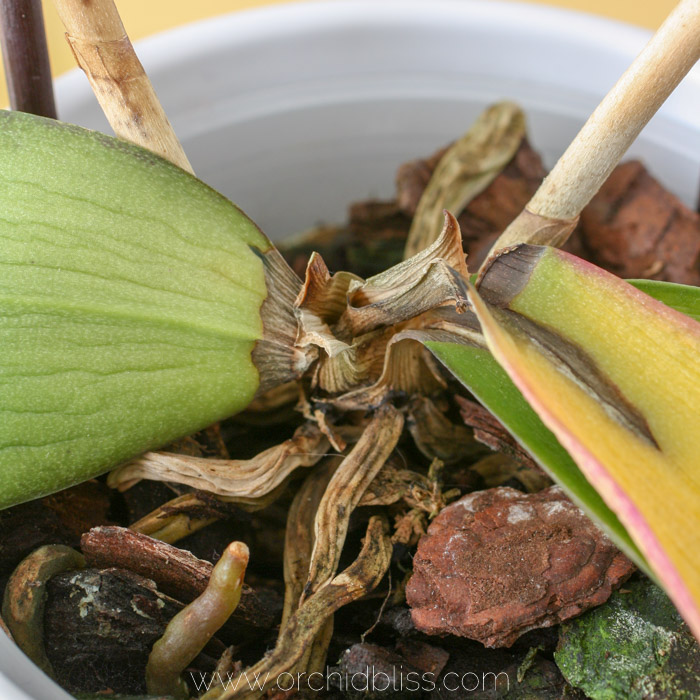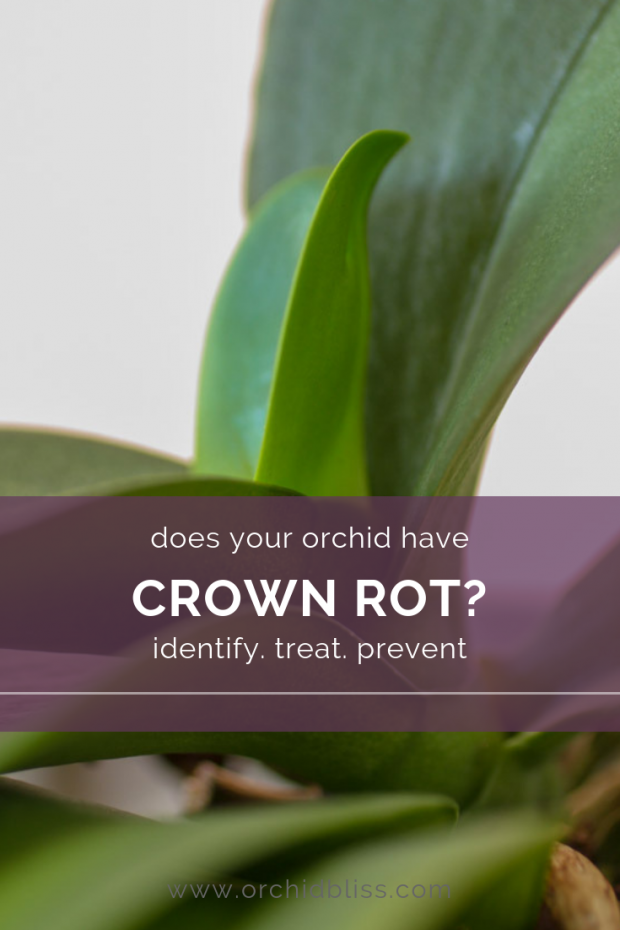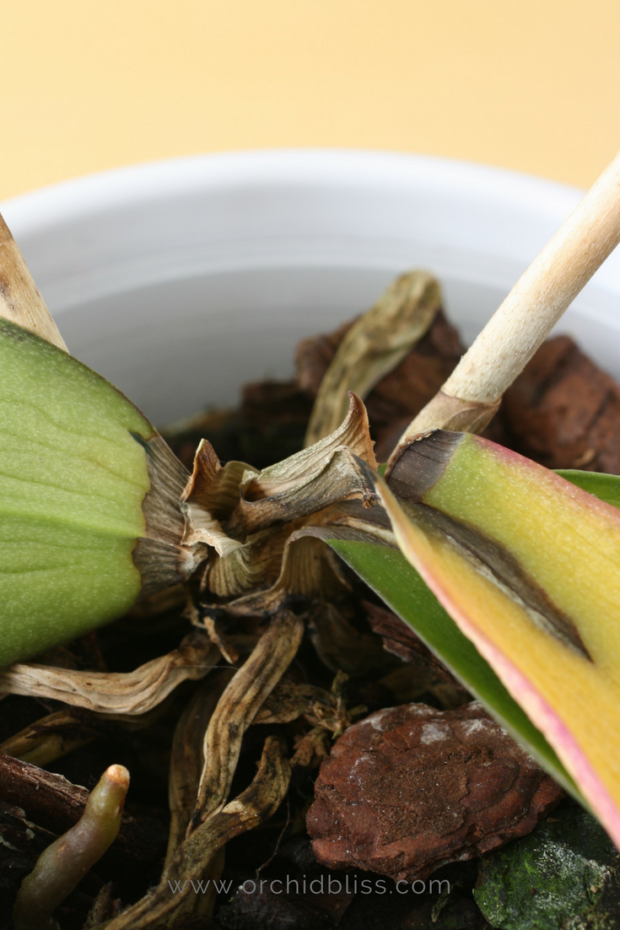
orchid crown rot – treatment and prevention
I first began growing orchids over 10 years ago. At the time, I had no idea how much orchids would become a part of my life. Not surprisingly, my first orchid was a phalaenopsis from the grocery store. One of the first problems I faced as a new orchid grower was crown rot. In this post, you’ll learn how to treat and prevent crown rot.
To treat crown rot, simply pour a small amount of hydrogen peroxide over the affected area. To prevent orchid crown rot, when watering your orchid, just water the roots – wet the potting media, but not the orchid’s stem or leaves. It really is that easy.
Crown rot is a common orchid ailment and is identified by droopy leaves breaking off at the base of the stem. In advanced cases, the entire base of the orchid will turn black. It must be stated that in some cases, once crown rot has set in, the orchid cannot be saved. That being said, it is still worth the effort to try to save the orchid. In the process, you will learn a lot about orchid care and you’ll be a much better caregiver in the future. With these tips, it won’t be long until you never have to worry about crown rot again. Your orchids just won’t get crown rot because it’s 100% preventable.

Some of the links on this page may be affiliate links. Click here to learn more.
What is Orchid Crown Rot?
Orchid crown rot occurs when water accumulates and lingers at the base of the orchid leaves. The good news is that you can easily treat crown rot with a product that you probably already have on hand – hydrogen peroxide.

The crown rot, in this case, is too far advanced for saving. To prevent crown rot always be on alert for signs of overwatering. The well-meaning owner of this orchid placed ice cubes on the leaves of the orchid. When the ice cubes melted, water accumulated between the leaves resulting in crown rot.
How to Treat Orchid Crown Rot with Hydrogen Peroxide
It’s time to get out your first aid kit, not for you, but for your orchids. Pour a small amount of hydrogen peroxide over the affected area on your orchid. You will see the peroxide bubble up. That is normal. Repeat treatment every 2-3 days.
How to Prevent Orchid Crown Rot
Tip #1 Keep water from lingering at the base of the leaves.
As the saying goes, an ounce of prevention is worth a pound of cure. Crown rot is easy to prevent. When watering your orchid try to keep water from accumulating at the base of the leaves.
Avoid overwatering your orchid. Pot your orchid in a well-draining potting mix and don’t let your orchid sit in water. After watering, I like to tip my orchid to the side to let any water that may be trapped between the leaves drain away from the orchid.
Improper watering often causes a host of problems, resulting in an unhealthy orchid. To avoid these pitfalls, click here to grab your cheat sheet to learn how to grow healthier orchids. It will be super helpful.
Orchids need constant but gentle air movement. In addition to preventing bacterial growth on an orchid’s leaves, a fan set to low will also help prevent crown rot by facilitating the evaporation of excess water.
Tip #2 Be a savvy buyer and check for crown rot before you buy.
When purchasing a new orchid, take a look at the base of the leaves. You can even give the leaves a gentle tug. If the leaves are not stiff and securely attached to the stem – keep looking.
Be on the Alert
Sadly, once crown rot has advanced too far, the orchid may not be able to be saved, but if you catch it in time, the hydrogen peroxide treatment will work well at nipping root rot in the bud.
Crown rot is 100% preventable. When watering, be aware of an orchid’s sensitivity to water accumulating between the leaves, and when buying a new orchid, be on the lookout for potential crown rot.
PHALAENOPSIS ORCHIDS
Orchid Potting Mix
If you purchase bare-root orchids, you will need a good potting mix. Personally, I love rePotme potting mix.
To provide additional moisture for Phalaenopsis orchids, add a couple of cubes of wool rock to the bark mix. This will keep your Phals evenly moist – not too dry, and not too wet.
Orchid Pots
You will also need a pot for your orchids. These liner pots are made of strong, durable plastic that provides drainage and allows you to see the roots and potting media. For added stability, place the liner pot inside a ceramic pot. If designer, hand-thrown pottery is more your style, I suggest Jolene’s Orchid Pots. As an orchid grower herself, Jolene creates elegant pots affording both form and function.

